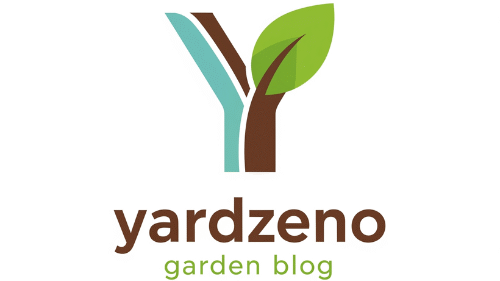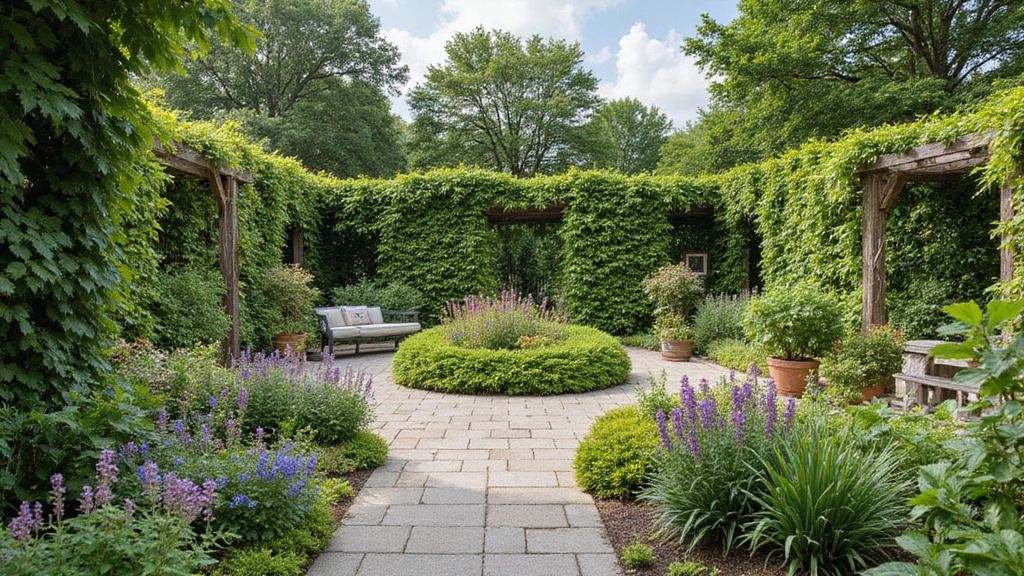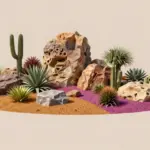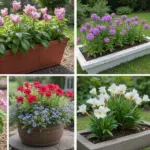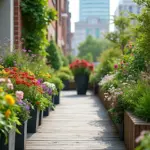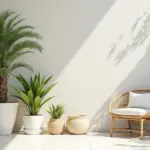Transforming your outdoor space into a personal paradise is easier than you think! With a little creativity and inspiration, anyone can create a stunning garden design that reflects their personality. From vertical gardens bursting with color to serene spaces that promote relaxation, this guide is packed with 30 unique ideas that will elevate your gardening game.
Whether you’re looking for sustainable practices or just want to revamp your backyard, there’s something in here for everyone. Garden design is not just planting; it’s about creating a lifestyle. Let’s dig into these fabulous garden design ideas that you’ll be eager to replicate in your own backyard!
1. Vertical Succulent Wall
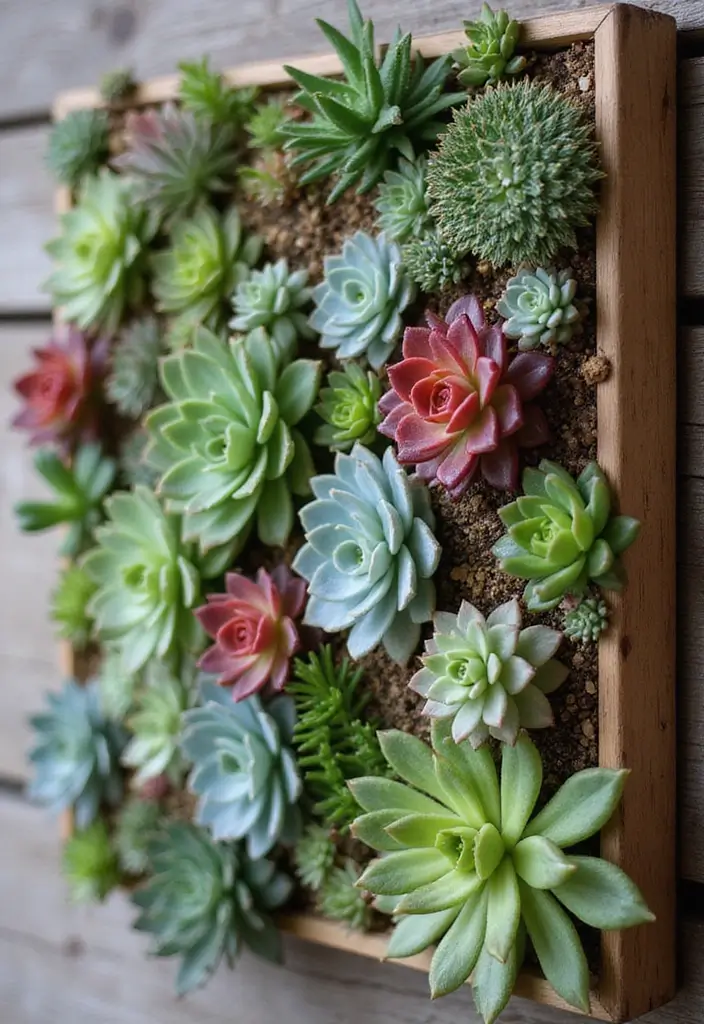
A vertical succulent wall is a trendy and space-saving way to incorporate greenery into your garden. Utilizing wooden pallets or specially designed wall systems, these walls can be filled with an array of succulents that thrive in sunlight yet require minimal watering.
Benefits:
– Eye-catching design: The colorful blooms of succulents create an artwork-like effect.
– Space-saving: Perfect for small gardens or balconies where floor space is limited.
– Low maintenance: Ideal for busy individuals, succulents require very little care.
To ensure your vertical wall flourishes, choose a south-facing wall for maximum sunlight and use a well-draining soil mix. You can even add drip irrigation for easy watering! This design not only saves space but adds texture and color to your garden.
2. Hanging Herb Garden
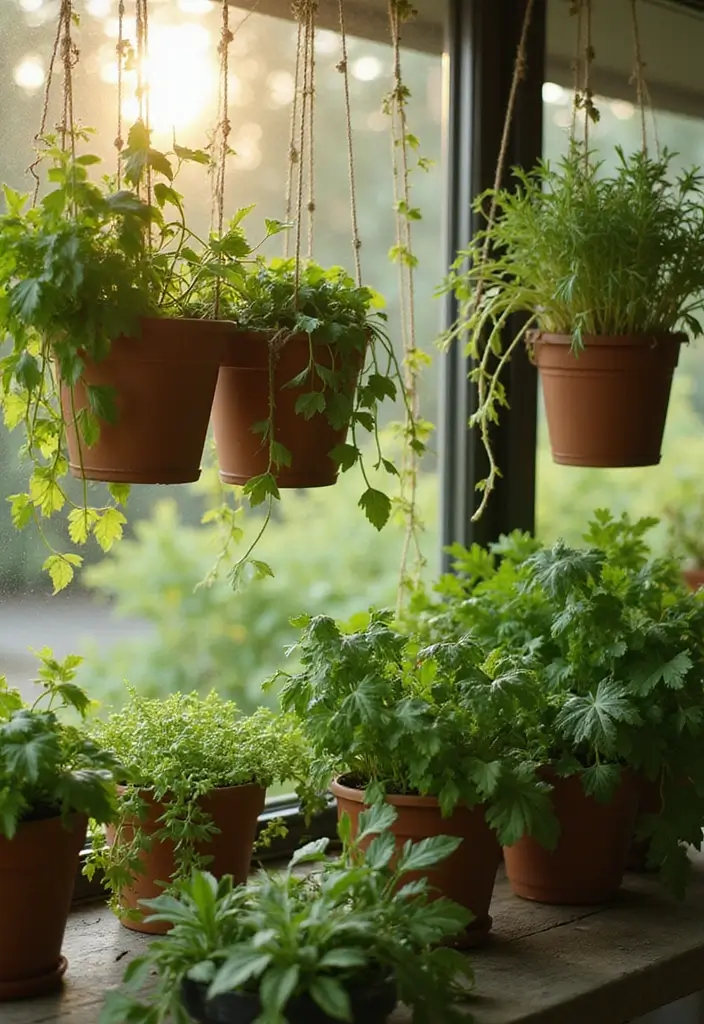
Imagine stepping out to your garden and snipping fresh herbs for dinner! A hanging herb garden can be a charming addition to any kitchen patio or balcony. Using pots or repurposed containers, you can create an aromatic display of herbs like basil, rosemary, and mint, all within arm’s reach.
Advantages:
– Fresh ingredients: Enjoy the taste of fresh herbs in your meals.
– Creative display: Arrange herbs in colorful pots for added aesthetics.
– Space-efficient: Ideal for small spaces, as they take up vertical space without crowding.
To set up your hanging garden, use strong hooks and ensure pots have sufficient drainage. This design not only spices up your cooking but also adds fragrance to your outdoor space!
Nothing beats the joy of snipping fresh herbs right from your own hanging garden. With a little creativity and care, you can transform your kitchen space into a fragrant oasis of flavors!
3. Pallet Planter Boxes
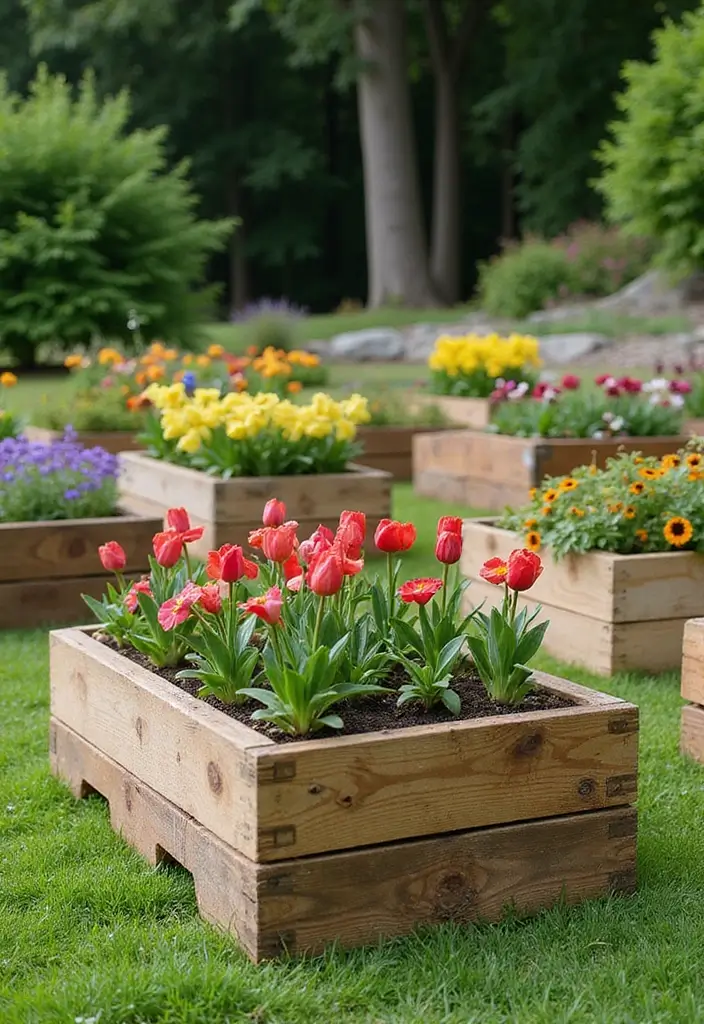
Pallet planter boxes are a fantastic way to recycle materials while adding unique charm to your garden! These DIY planters can be customized to any size and filled with your favorite flowers or vegetables.
Why they work:
– Sustainable: Using old pallets is eco-friendly and budget-friendly.
– Customizable: You can paint or stain the wood to match your garden’s theme.
– Versatile: Perfect for raised beds or as individual planters.
Placing these planters at different heights can provide visual interest and make gardening more accessible. Just remember to line the inside to prevent soil loss. A creative touch like adding wheels can make these boxes mobile for optimal sun exposure!
4. Vertical Vegetable Garden
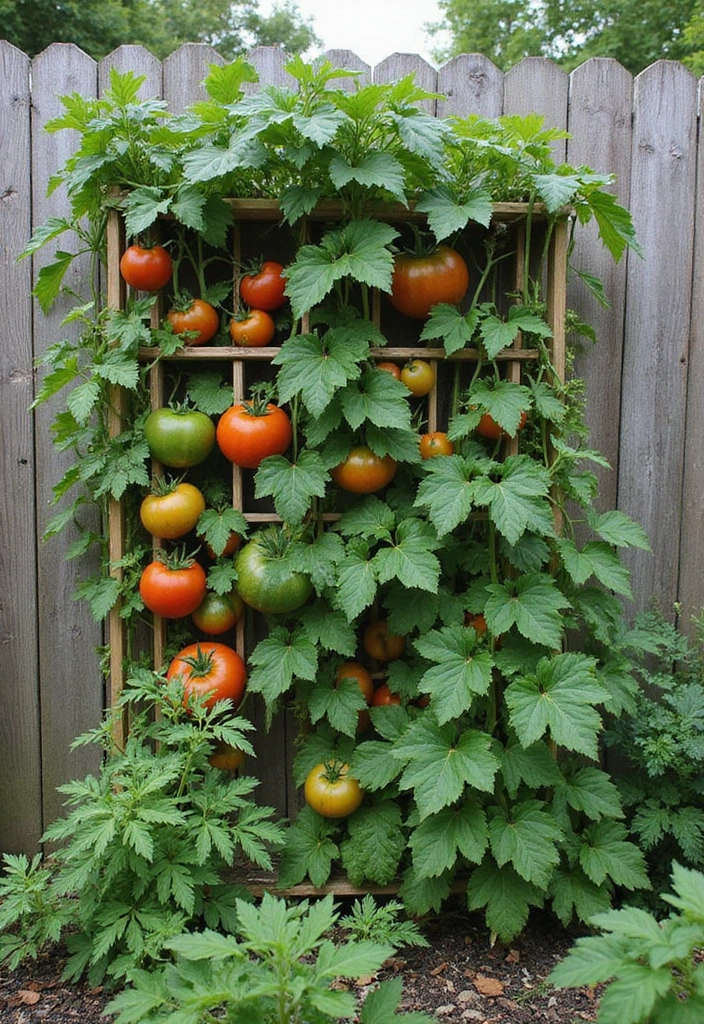
Maximize your gardening potential with a vertical vegetable garden! This method not only saves space but also provides easy access to your homegrown vegetables. Use trellises, wall-mounted shelves, or even vertical planters to create a stunning edible display.
Benefits:
– Space-efficient: Perfect for urban gardening where ground space is limited.
– Elevated gardening: Easier on the back and knees, great for those with mobility challenges.
– Exciting design: Create a living art piece while growing your own food.
Select vegetables like tomatoes, peas, and cucumbers that naturally climb. With proper sunlight and watering, your vertical garden will flourish and provide a bountiful harvest. Plus, the visual appeal of vertical gardening makes it a focal point in any landscape!
5. Modular Vertical Gardens
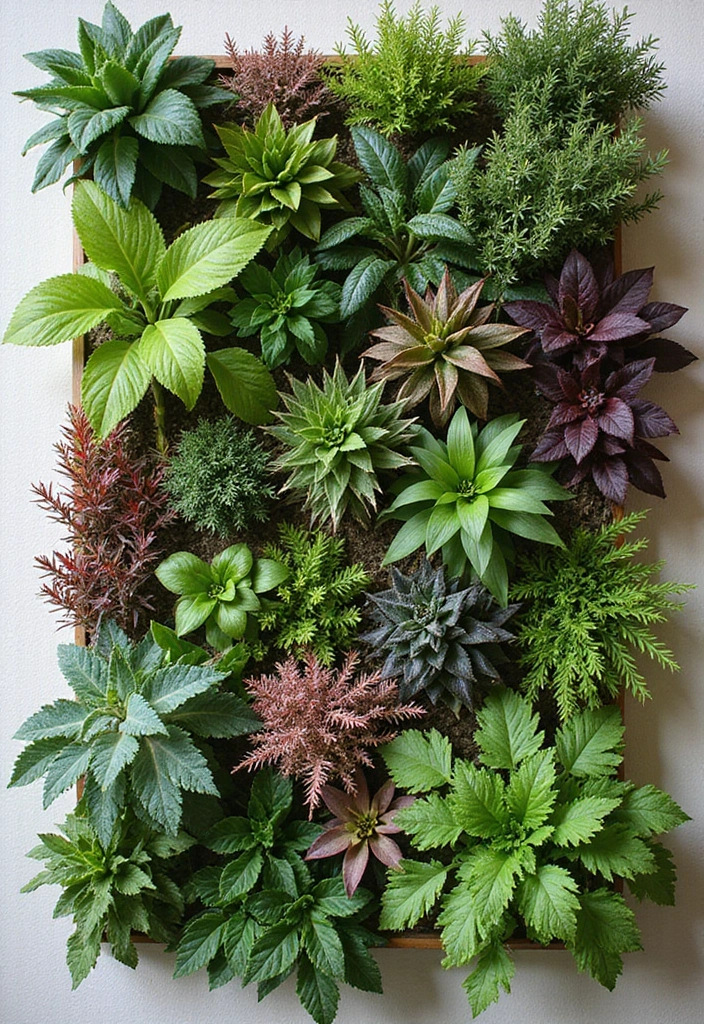
Modular vertical gardens are an innovative way to create stunning green walls. These systems allow you to arrange individual planting modules for a customizable and artistic garden. Perfect for both indoor and outdoor spaces, these installations can be filled with a plethora of plants, from ferns to flowering vines.
Advantages:
– Personalized design: Change the arrangement as you like!
– Optimal space use: Great for small spaces where conventional gardening isn’t feasible.
– Visual appeal: Creates a striking, modern look in any setting.
To get started, select a wall that receives ample light and experiment with different plant combinations. If you’re planning to use it indoors, consider using air-purifying plants to improve your home’s air quality while looking fabulous!
6. Upcycled Bottle Gardens
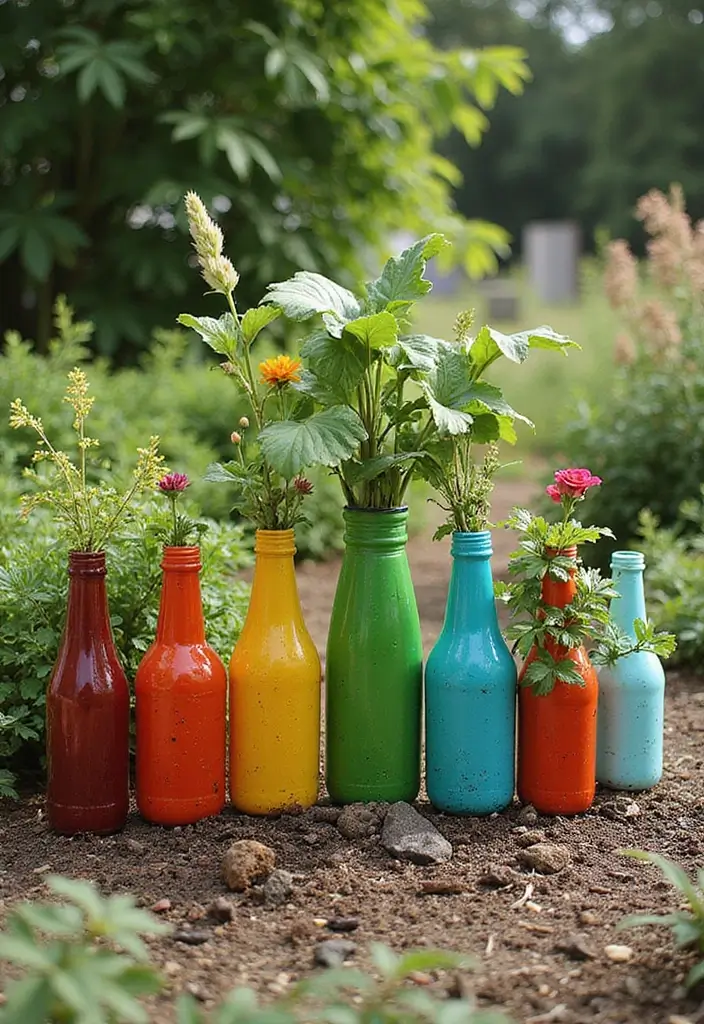
Upcycling is all the rage, and creating a garden from old bottles is a fun and eco-friendly project! Whether you use glass or plastic bottles, you can create hanging planters, herb jars, or even a bottle wall that brings charm to your garden.
Benefits:
– Creative recycling: Give old bottles a new life in your garden.
– Low-cost gardening: Great way to garden on a budget.
– Unique decorations: Each bottle can be painted or decorated to fit your style.
Simply cut the bottles for drainage or hanging, fill them with soil, and plant your favorite flowers or herbs. This style not only brightens up your yard but also promotes sustainable gardening practices!
7. Wall-Mounted Planters
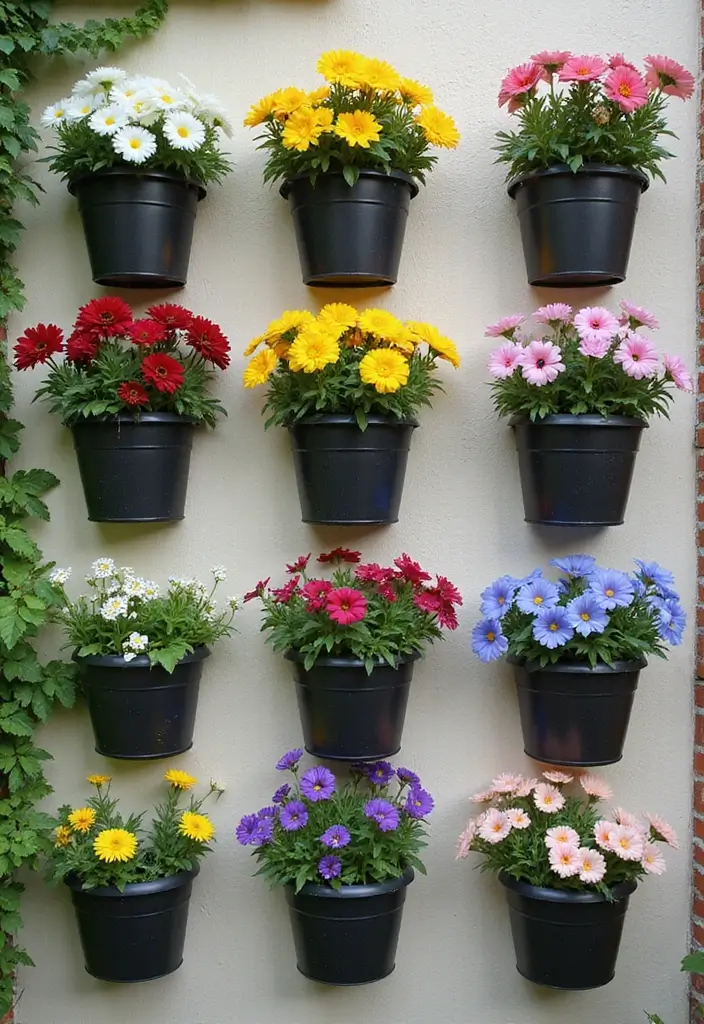
Take advantage of vertical space with wall-mounted planters! These planters can be attached to fences, walls, or even balconies, and provide a stylish way to grow flowers or herbs without taking up precious ground space.
Advantages:
– Easy access: Perfect for quick snips of fresh herbs while cooking.
– Decorative flair: Adds beauty to bare walls and fences.
– Variety of options: Available in various materials like wood, metal, or ceramic to match your style.
Make sure to choose plants that will thrive in their location, taking into account sunlight and exposure. Not only do wall-mounted planters make gardening accessible, but they also enhance your outdoor aesthetics effortlessly!
8. Terraced Gardens
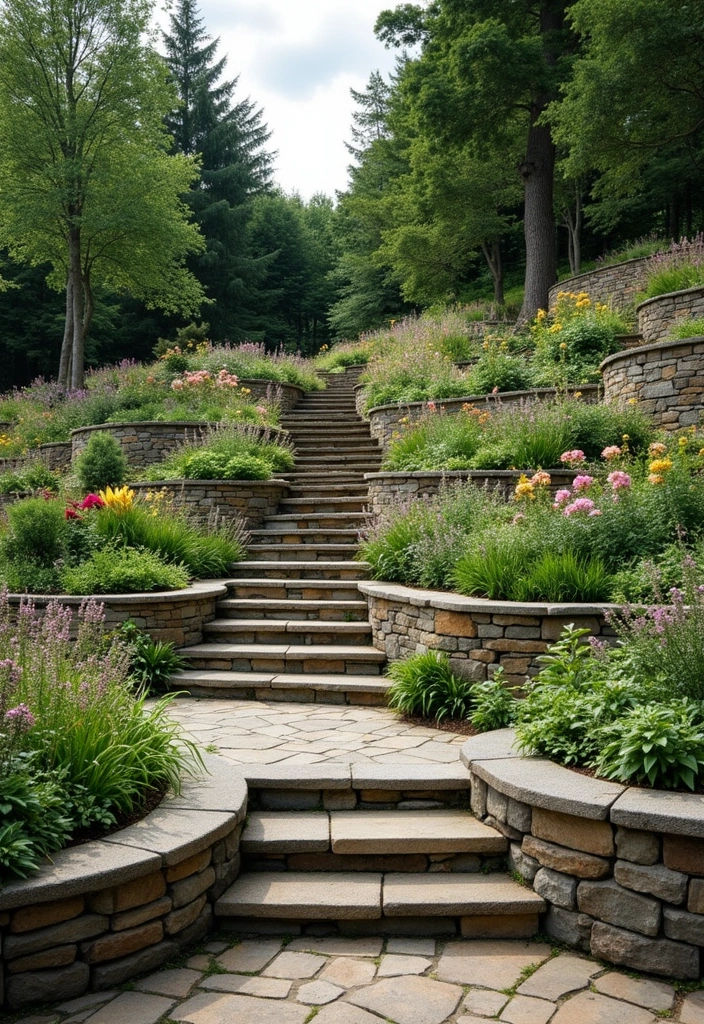
If you have a sloped yard, terraced gardens are not just practical but also beautiful! By creating flat areas on different levels, you can grow a variety of plants while preventing soil erosion.
Benefits:
– Erosion control: Prevents soil from washing away during rain.
– Diverse planting: Create different zones for flowers, vegetables, or herbs.
– Stunning visuals: Adds depth and interest to your landscape.
Use stones, timber, or even recycled materials to create your terraces and plant accordingly. Adding pathways between levels can make maintenance easier while enhancing the overall look of your garden. Terraced gardens can be a real showstopper, especially when adorned with colorful blooms!
9. Green Roofs
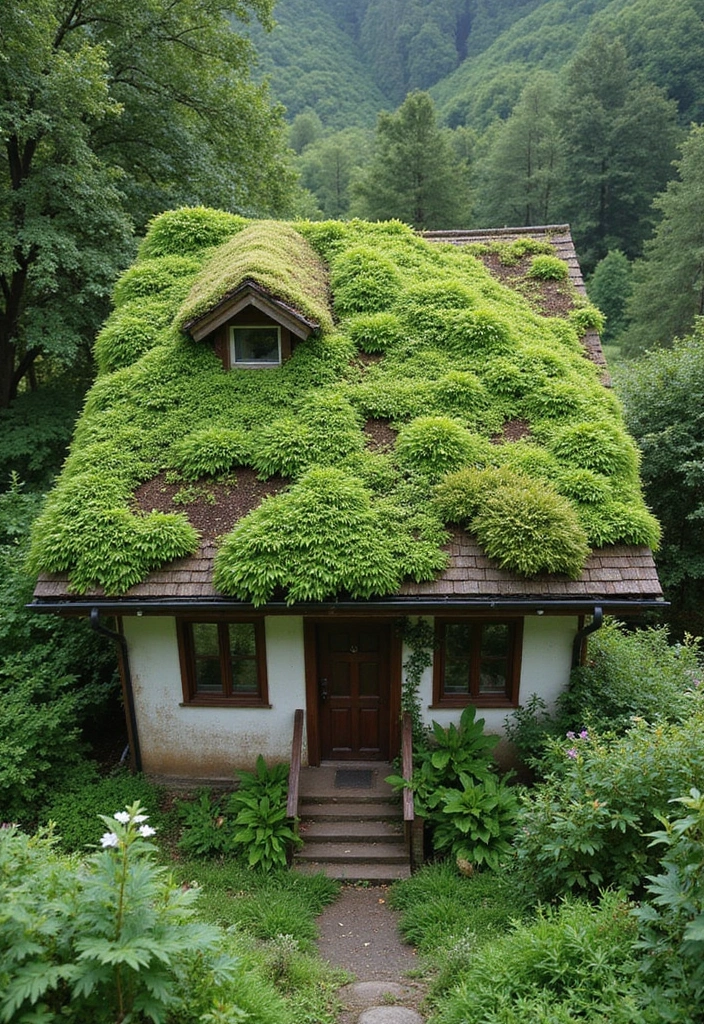
Transform the top of your garage or shed into a lush green roof! Green roofs not only add beauty but also provide insulation and reduce rainwater runoff.
Why they’re great:
– Environmental benefits: Helps with air quality and reduces heat.
– Aesthetic appeal: Unexpected greenery in urban settings adds charm.
– Increased biodiversity: Supports local wildlife by providing habitats.
Start with a lightweight soil mix and choose hardy, drought-resistant plants like sedums or native grasses. A green roof can be a conversation starter while enhancing the ecological footprint of your property!
10. Butterfly Garden
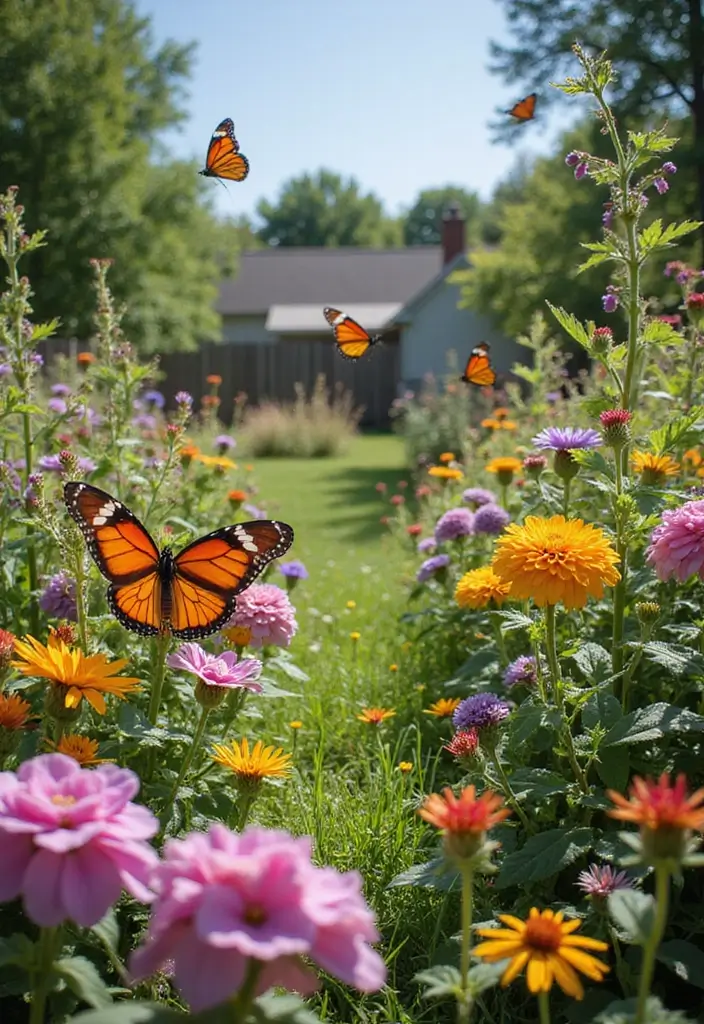
Create a sanctuary for butterflies and other pollinators by designing a butterfly garden! By selecting plants that provide nectar and habitat, you can attract these beautiful creatures while supporting biodiversity.
What to include:
– Native flowers: Choose plants like coneflowers and black-eyed Susans that attract butterflies.
– Varied heights: Include taller plants towards the back and shorter ones in front for visual appeal.
– Water sources: Add shallow dishes or mud puddles as water sources for butterflies.
Place your garden in a sunny spot to encourage butterfly activity and avoid using pesticides that could harm them. This not only beautifies your garden but also plays a crucial role in local ecosystems!
11. Zen Garden
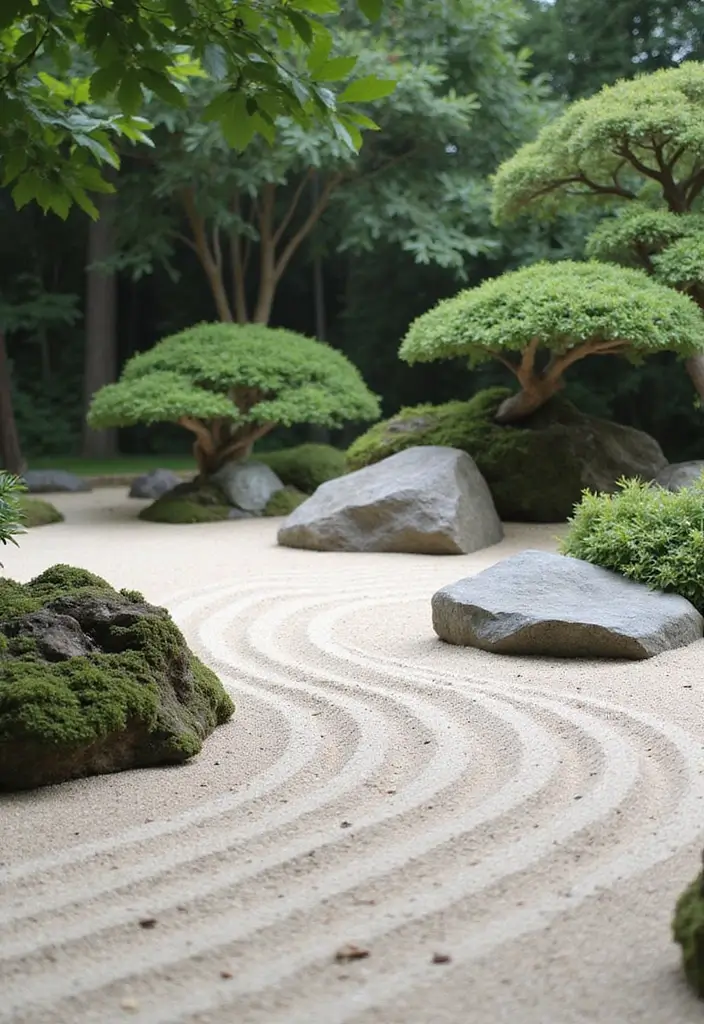
Create a peaceful retreat right in your backyard with a Zen garden. These gardens focus on minimalism and tranquility, typically featuring sand, stones, and strategically placed plants.
Key elements:
– Raked sand: Represents water and creates a soothing visual.
– Boulders: Symbolize mountains and add dimension.
– Plants: Use low-maintenance plants like moss and Japanese maples.
A Zen garden encourages mindfulness and meditation, making it the perfect escape for relaxation. Choose a location with minimal distractions and enjoy creating a serene space for contemplation.
In the chaos of life, a Zen garden offers a serene escape. Embrace minimalism and let the raked sand and gentle plants inspire your journey to mindfulness and tranquility in your own backyard!
12. Cottage Garden
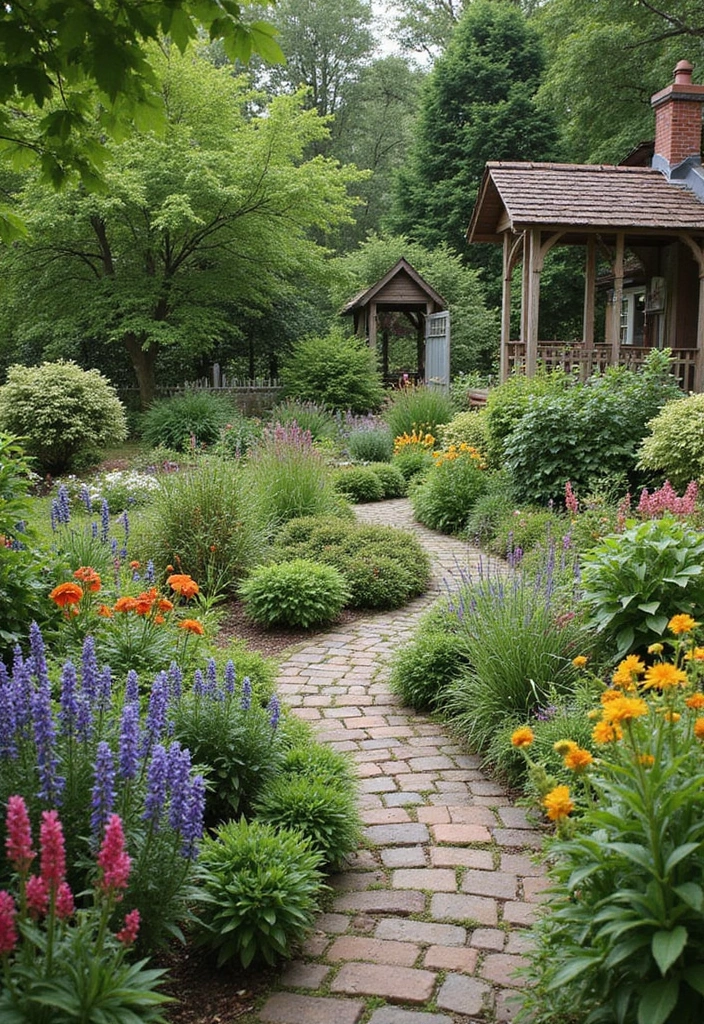
Cottage gardens are known for their charming and romantic aesthetics. Filled with an abundance of flowers and plants in an informal layout, this garden style invites wildlife and provides a riot of color!
Characteristics:
– Diverse plant selection: Incorporate a mix of perennials, annuals, and herbs.
– Informal layout: Allow plants to grow freely for a natural look.
– Garden structures: Add trellises or arbors for climbing plants.
Choose plants that bloom at different times to ensure your garden is vibrant throughout the seasons. A cottage garden is a true delight for the senses and a perfect spot to unwind.
13. Fairy Garden
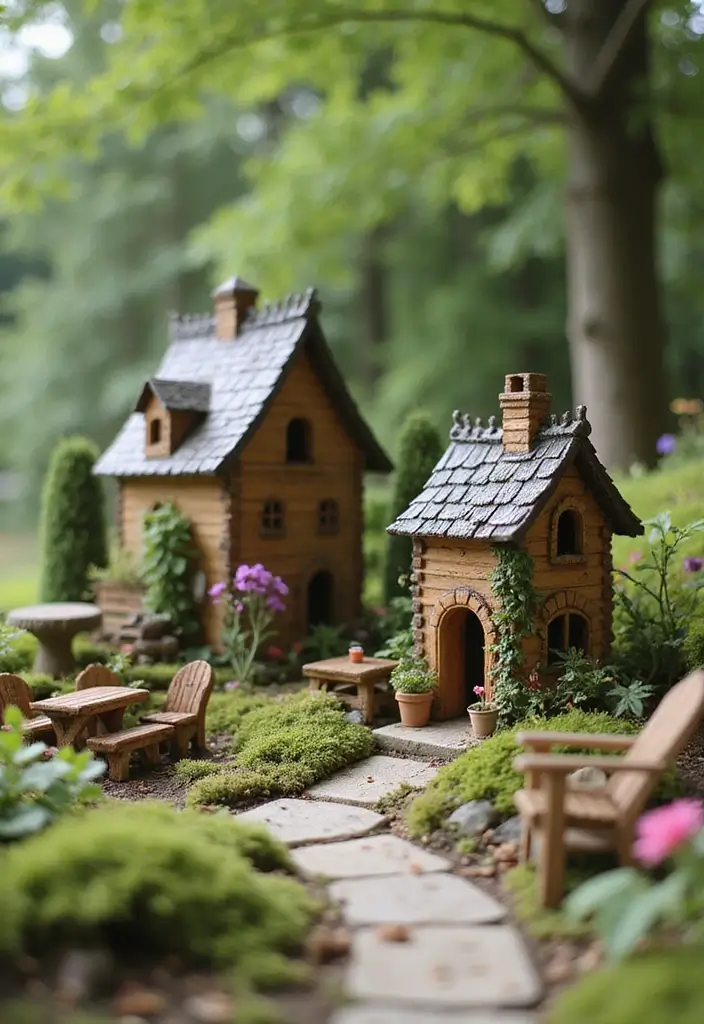
Let your imagination run wild with a fairy garden! This whimsical gardening style invites creativity by using miniature furniture, decorative stones, and unique plants.
How to create one:
– Small plants: Use dwarf plants or succulents.
– Miniature furniture: Create little nooks with fairy houses or benches.
– Decorative accents: Incorporate tiny lights or stones to enhance the magic.
A fairy garden can be a delightful project for kids and adults alike, and you can easily change its theme according to seasons or holidays, allowing for endless creativity!
14. Native Plant Garden
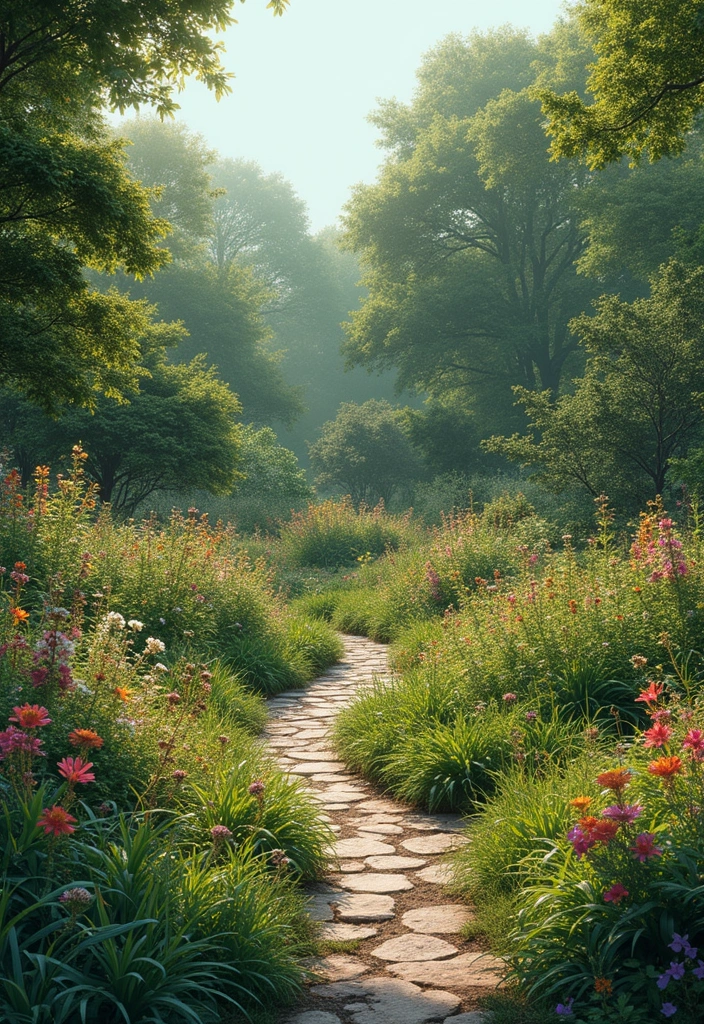
Embrace local biodiversity by creating a native plant garden! These gardens focus on plants that are indigenous to your region, promoting ecological balance while requiring minimal maintenance.
Why native plants?
– Support local wildlife: Attract pollinators and birds that rely on native species.
– Low maintenance: They are adapted to your local climate, requiring less water and care.
– Natural beauty: These plants can be just as vibrant and colorful as their exotic counterparts.
Design your garden with a variety of heights and colors to create a natural habitat that thrives year-round while enhancing your landscape’s beauty.
15. Colorful Container Gardens
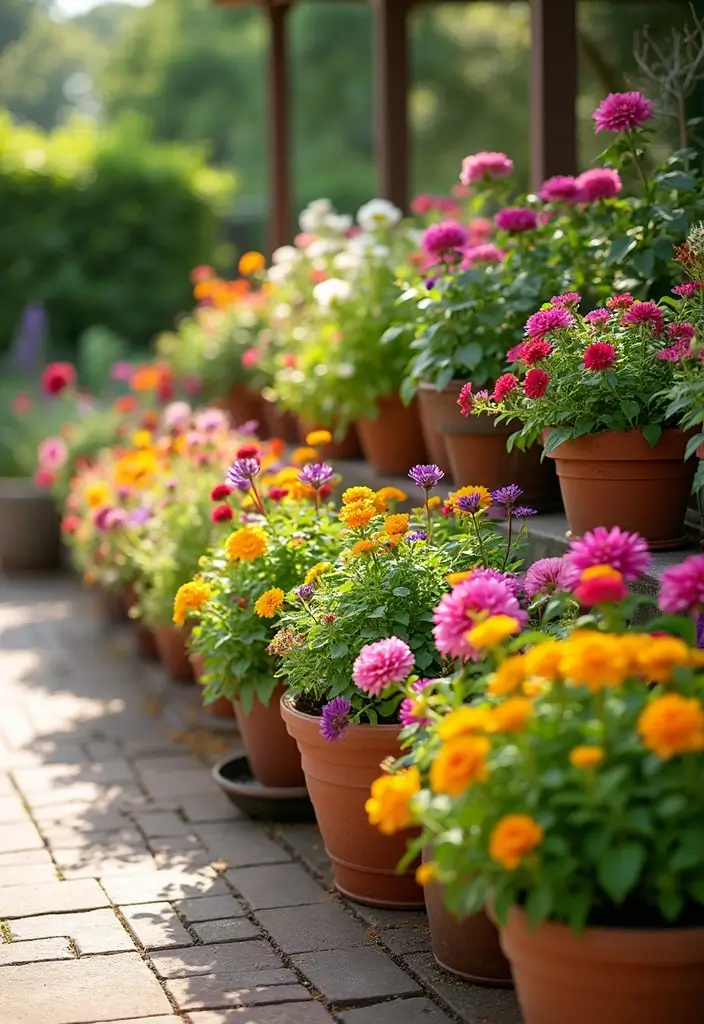
Container gardens are a fantastic option for those with limited space or who want to add color to their patios or balconies. Using pots of different sizes, you can create vibrant displays with flowers, herbs, or even small vegetables.
Tips for success:
– Choose the right containers: Ensure they have drainage holes.
– Mix and match: Combine different plants for varying heights, colors, and textures.
– Seasonal changes: Update your containers with seasonal blooms for continuous color.
Container gardens offer versatility and can be easily rearranged, allowing you to experiment with different layouts and combinations throughout the year!
16. Rock Gardens
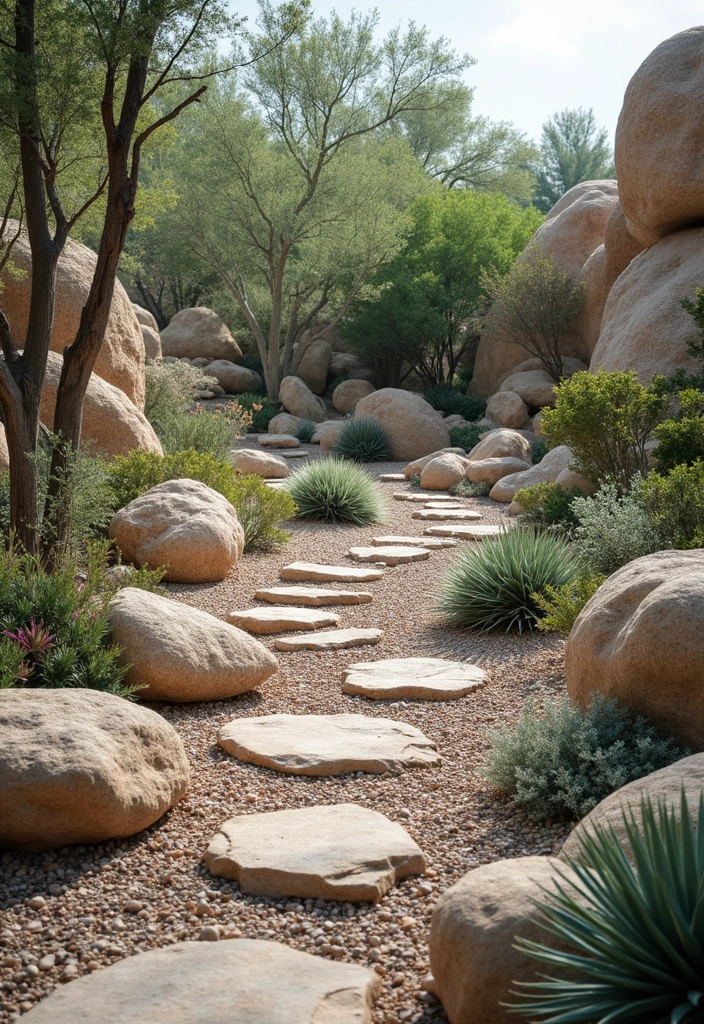
Rock gardens are a beautiful way to showcase drought-resistant plants while adding texture to your landscape. This style incorporates stones and gravel alongside plants that thrive in less water, perfect for low-maintenance gardening.
Benefits:
– Drought-tolerant: Ideal for regions with limited water supply.
– Natural beauty: Rocks create a stunning visual contrast against greenery.
– Low maintenance: Once established, these gardens require minimal upkeep.
Choose various sizes of rocks and select plants like succulents, alpine flowers, or ornamental grasses to create depth and interest in your rock garden. This type of landscape design blends seamlessly with natural surroundings while offering a unique outdoor experience.
17. Edible Landscape
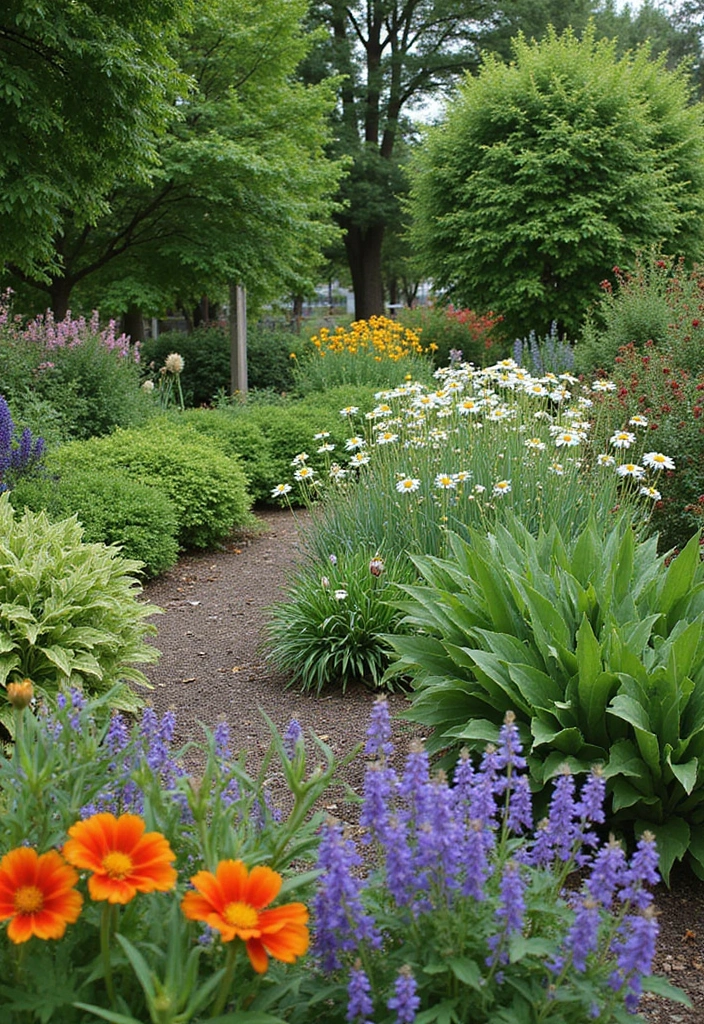
Why not make your garden both beautiful and functional with an edible landscape? This concept integrates fruits, vegetables, and herbs into your existing flower beds or landscaping.
How to incorporate edibles:
– Mix with flowers: Plant herbs like chives or basil alongside flowers for a colorful display.
– Vertical gardening: Use trellises for climbing vegetables like cucumbers and beans.
– Seasonal plants: Rotate your crops seasonally for continuous harvest.
An edible landscape not only provides fresh produce but also enhances your garden’s beauty and biodiversity, making it a joyful experience to harvest from your own backyard!
18. Wildlife Garden
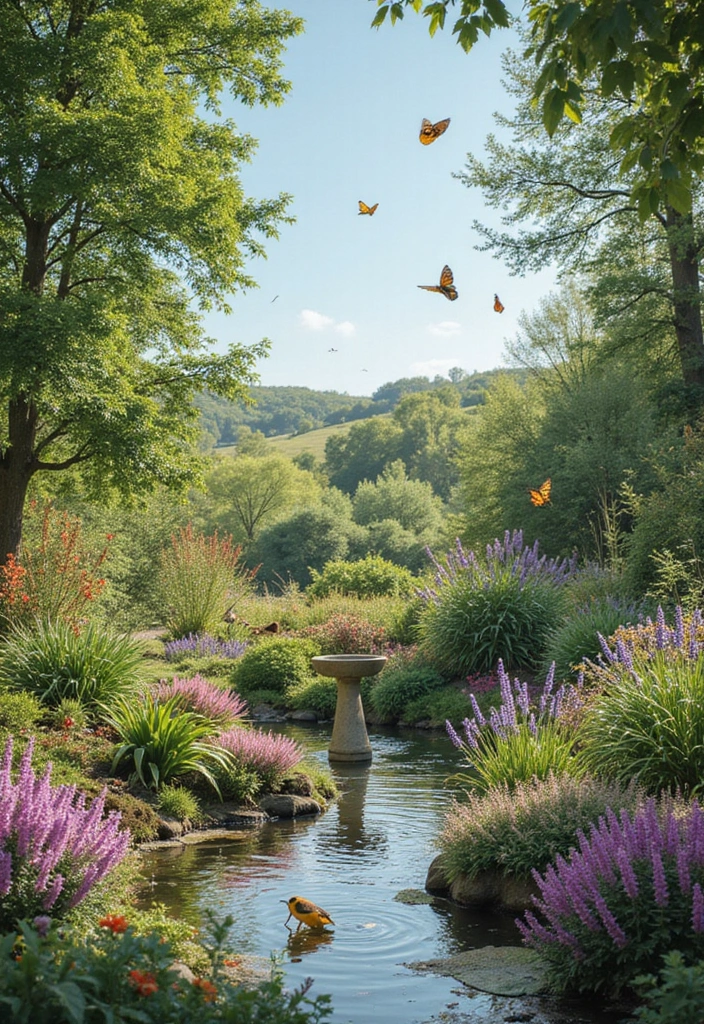
Design a garden that welcomes local wildlife by creating a wildlife-friendly habitat. This garden should include native plants that provide food, shelter, and water for birds, butterflies, and beneficial insects.
Key components:
– Diverse plant life: Include a mix of trees, shrubs, and flowers to attract various species.
– Water sources: Add birdbaths or small ponds to provide hydration and bathing options.
– Shelter: Incorporate nesting boxes and brush piles for safety.
By taking these steps, your garden can become a vibrant ecosystem that supports local wildlife, while you enjoy the beauty and activity they bring!
19. Garden Pathways
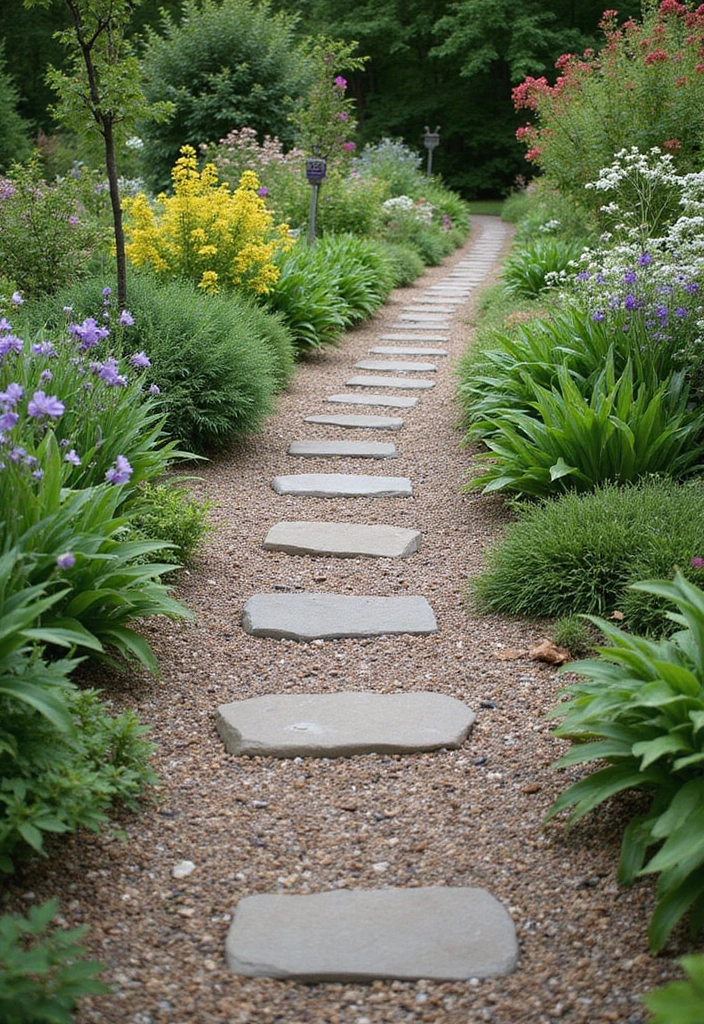
Adding pathways to your garden not only enhances its aesthetic appeal but also provides structure and accessibility. Use materials like stone, gravel, or even wood to create walkways that guide visitors through your garden.
Advantages:
– Guided experience: Pathways create a clear flow through the garden.
– Keeps feet clean: Prevents trampling on delicate plants.
– Design possibilities: Customize colors and materials to fit your style.
Create meandering pathways that invite exploration, incorporating seating areas along the way for moments to relax and enjoy your surroundings. Thoughtful design of garden pathways can transform the entire experience of your outdoor space!
20. Scented Garden
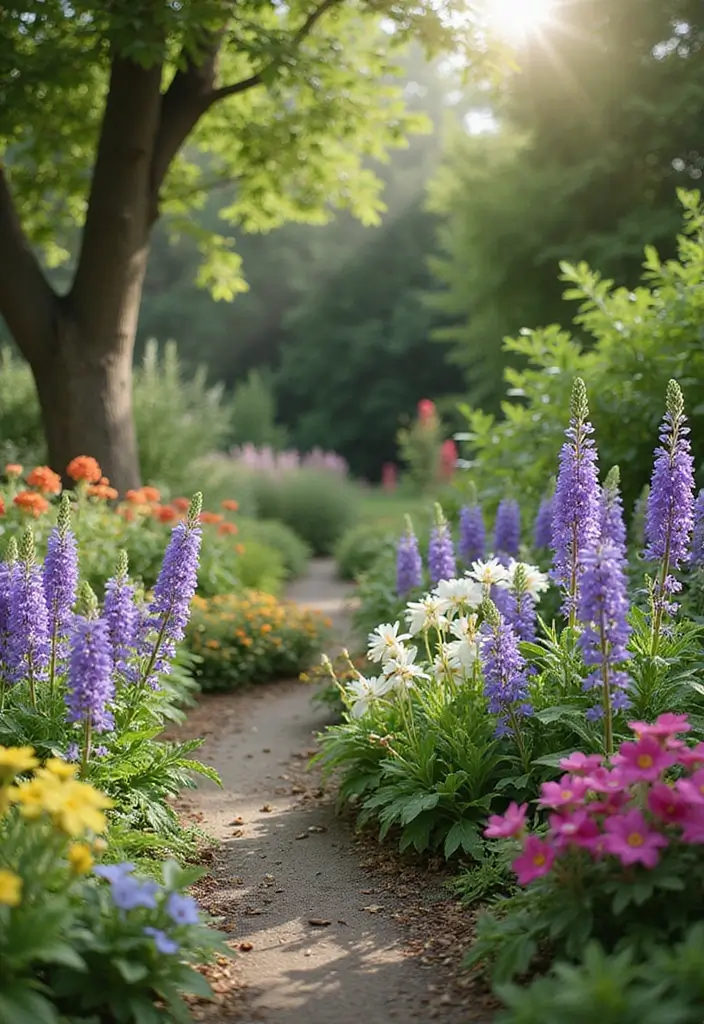
A scented garden is a feast for the senses, offering fragrances that can uplift your mood and create a relaxing atmosphere. Focus on plants with aromatic qualities to design a garden that smells as good as it looks.
Best plants for fragrance:
– Lavender: Known for its calming scent.
– Jasmine: Sweet and intoxicating aromas.
– Rosemary and mint: Great for culinary and aromatic uses.
Position your fragrant plants near seating areas or pathways to fully enjoy their lovely scents. A scented garden offers a magical experience that can be enjoyed day and night!
A scented garden isn’t just a visual delight; it’s a mood-lifting oasis! Surround yourself with lavender, jasmine, and rosemary to create a fragrant escape that soothes the soul and brightens your day.
21. Outdoor Living Spaces
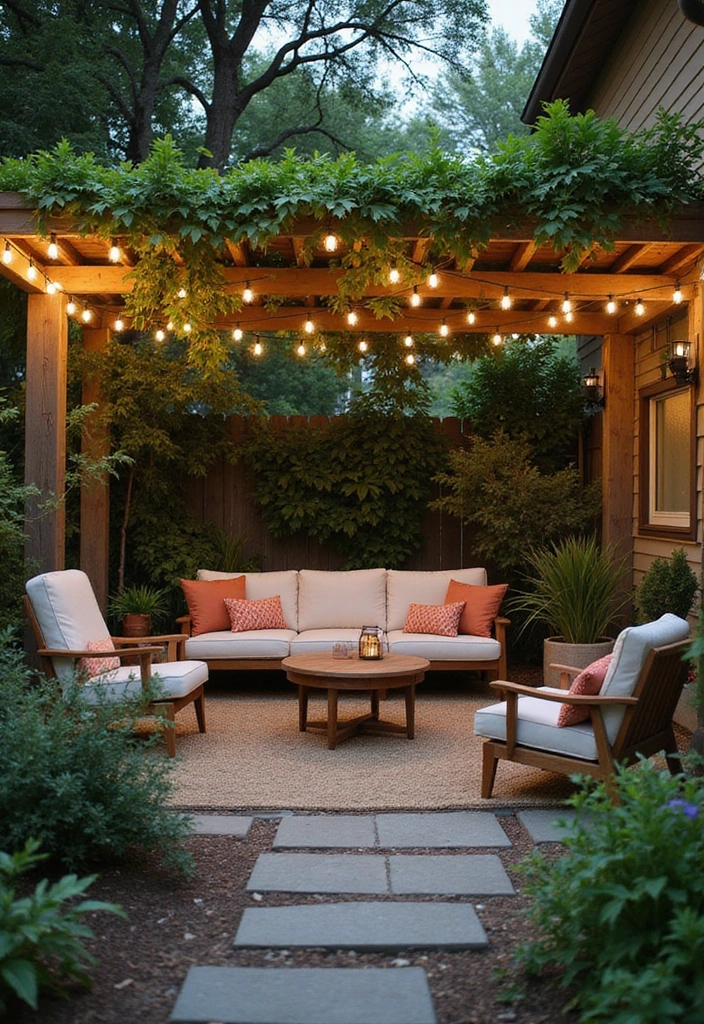
Transform your garden into an outdoor living space where you can relax and entertain. Incorporate comfortable seating, outdoor rugs, and even a fire pit for cozy evenings.
Key features:
– Seating: Add benches or loungers placed around focal plants or beautiful views.
– Shade options: Use umbrellas, pergolas, or shade sails to create comfortable spots.
– Lighting: String lights or lanterns can create an inviting atmosphere at night.
By blending indoor comfort with outdoor beauty, your garden can become an extension of your home, perfect for gatherings or solo retreats. An outdoor living space invites you to enjoy your garden all day long!
22. Seasonal Planting
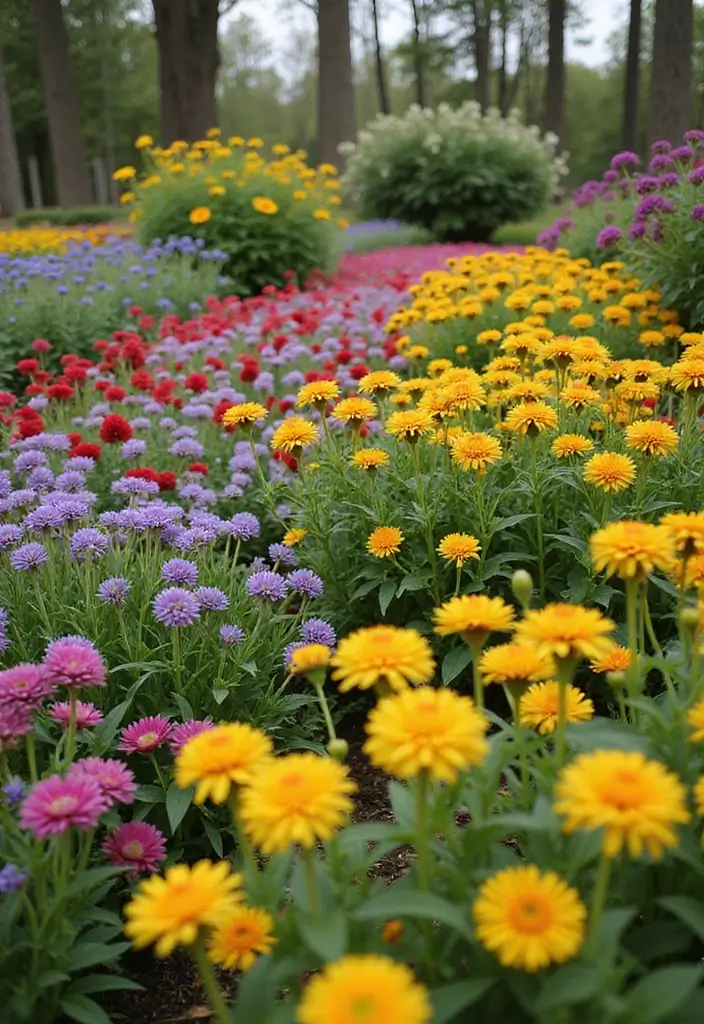
Maximize your garden’s appeal throughout the year by focusing on seasonal planting. Choose flowers and plants that bloom in different seasons to maintain continuous color and interest.
Considerations:
– Spring bulbs: Daffodils and tulips bring early color.
– Summer blooms: Sunflowers and zinnias pop in sunny months.
– Fall foliage: Add ornamental grasses or asters for autumn beauty.
Planning for seasonal planting not only enhances beauty but also supports local wildlife that depends on diverse plant life year-round. Take time to research which plants thrive in your specific climate to ensure success!
23. Minimalist Garden Design
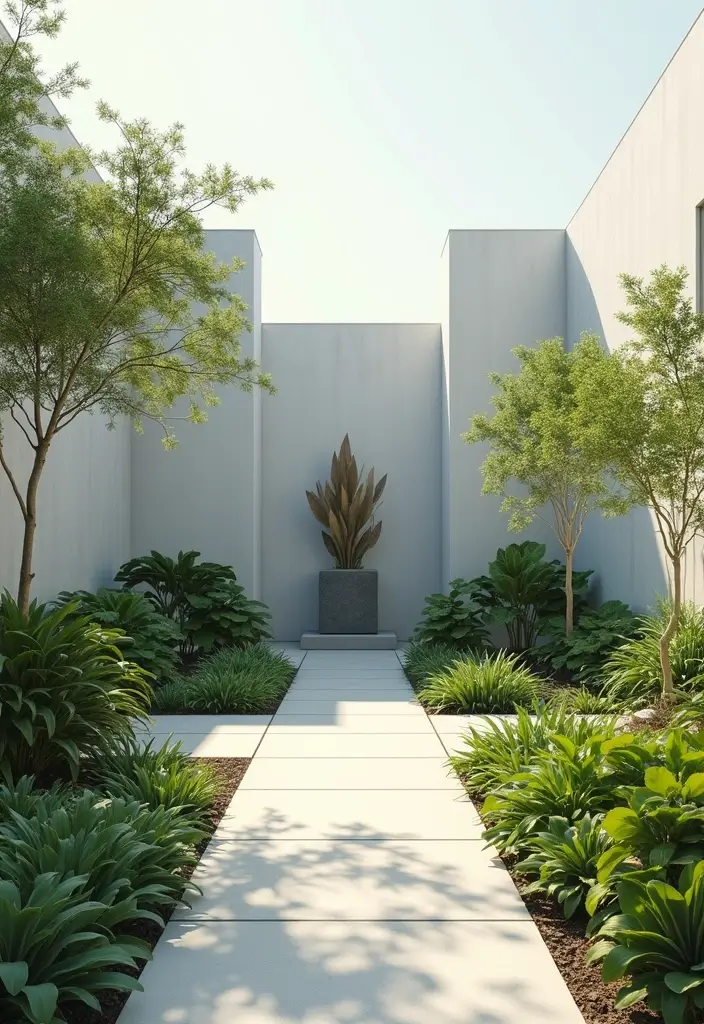
For those who prefer simplicity, a minimalist garden design can create a calm and serene environment. Focus on fewer plant varieties and clean lines for a modern aesthetic.
Elements to consider:
– Focal points: Use sculpture or boulders as central features.
– Limited plant selection: Choose a small number of plants with bold shapes and colors.
– Negative space: Incorporate open areas to highlight the beauty of your plants.
A minimalist garden invites tranquility and requires less maintenance, allowing you to enjoy a neat and organized garden space. It’s a great way to create a retreat from the chaos of daily life!
24. Backyard Wildlife Hotel
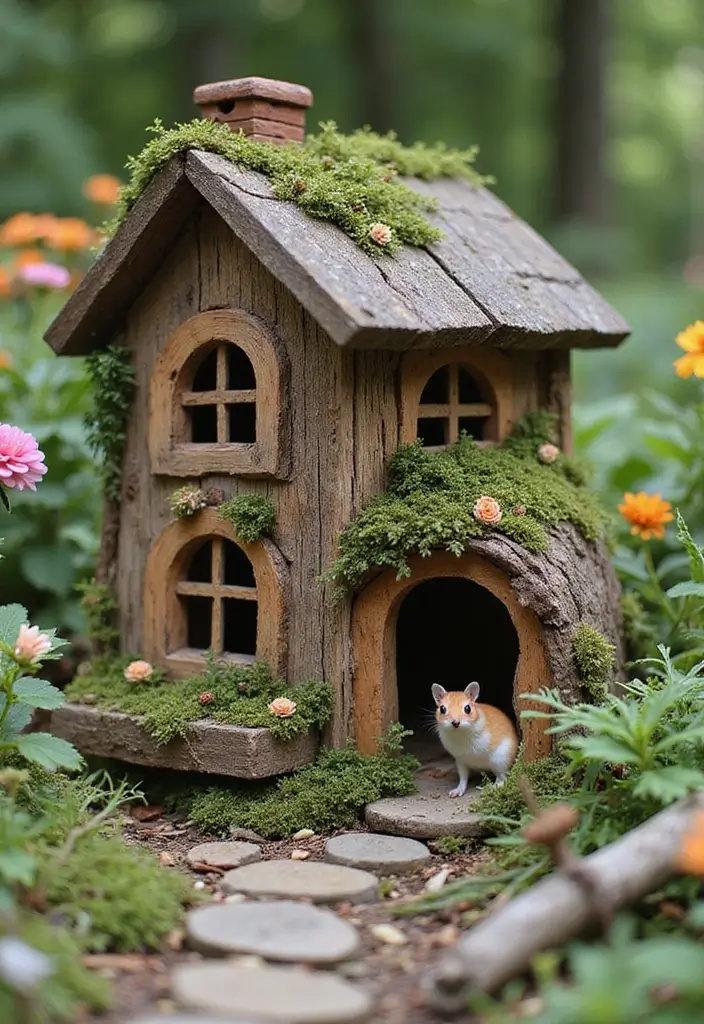
Build a backyard wildlife hotel to offer shelter to various creatures! These hotels can be made using simple materials like wood, bamboo, and straw, providing homes for insects, birds, and small animals.
Benefits:
– Promotes biodiversity: Invites various species to your garden.
– Educational: Great project for kids to learn about nature.
– Eco-friendly: Supports local ecosystems.
Position your wildlife hotel in a quiet corner of the garden, surrounded by native plants. Building one is a fun and engaging way to encourage wildlife while enhancing the beauty of your outdoor space!
25. Garden Lighting
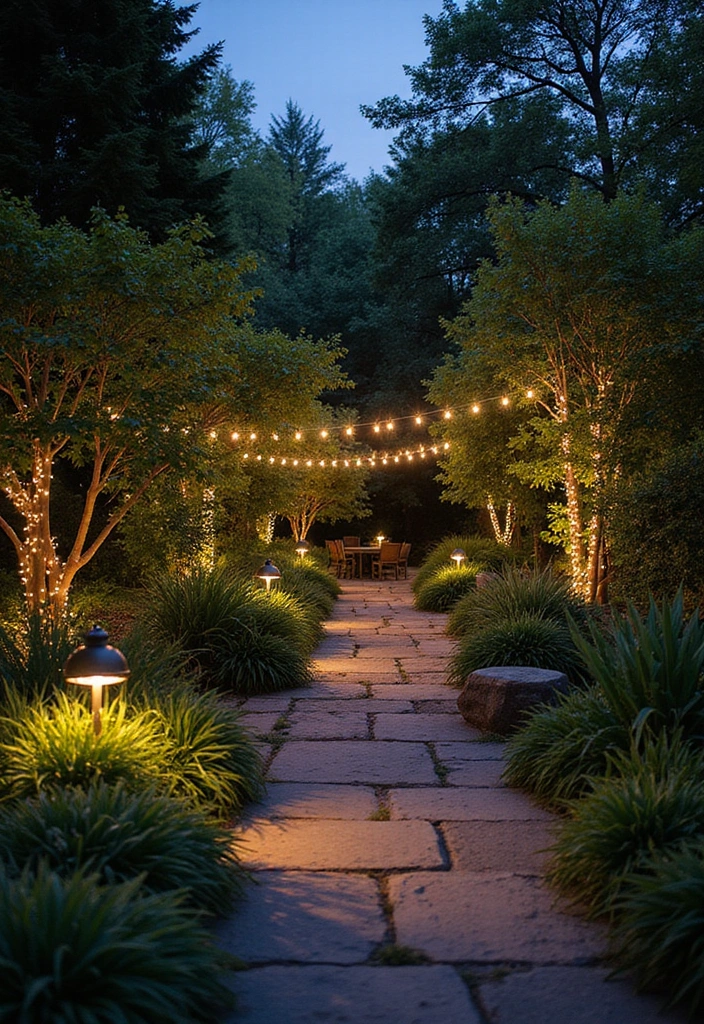
Enhance your garden’s beauty and usability with strategic lighting. From fairy lights to spotlights, lighting can transform your outdoor space into a magical setting.
Considerations:
– Path lighting: Use solar lights along pathways for safety.
– Focal points: Highlight trees or sculptures with uplighting.
– Ambient lighting: Soft lights in seating areas create a cozy atmosphere for evenings.
With the right lighting, your garden can become a stunning sight in the evening, inviting you to enjoy those beautiful summer nights under the stars!
26. Pond or Water Feature
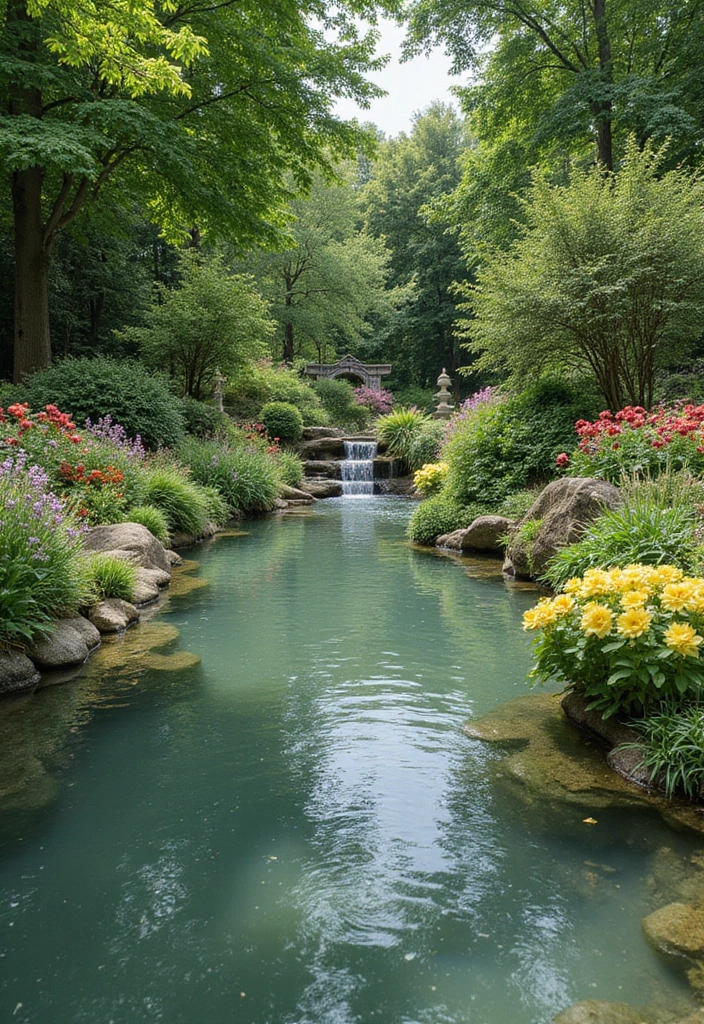
Add tranquility and beauty to your garden with a pond or water feature. The soothing sound of water can create a serene atmosphere, attracting wildlife and enriching your garden’s ecosystem.
Types to consider:
– Small ponds: Perfect for fish and aquatic plants.
– Waterfalls: Create movement and focus in your garden.
– Birdbaths: Provide a refreshing stop for local birds.
Position your water feature thoughtfully, considering sunlight and access for maintenance. A well-placed pond not only enhances the visual appeal but also invites beneficial wildlife into your outdoor space!
27. Seasonal Displays
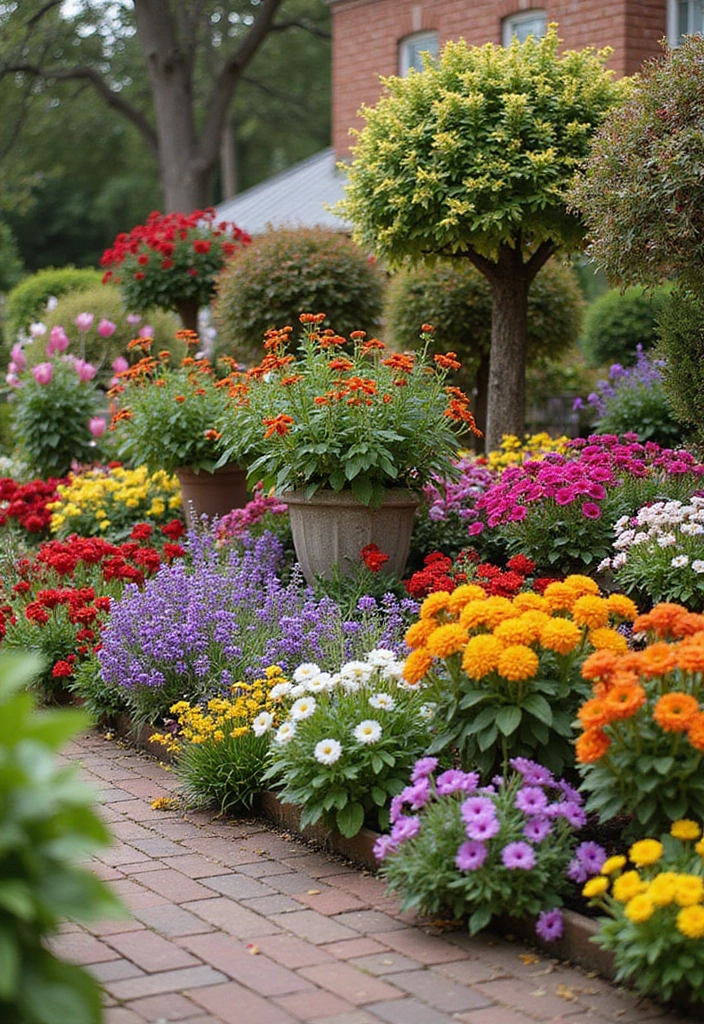
Showcase the beauty of different seasons with seasonal displays in your garden! This can involve changing plant arrangements or featuring seasonal decorations like pumpkins in the fall or lights during winter.
Ways to do this:
– Seasonal flowers: Change displays to reflect seasons with appropriate blooms.
– Decorative elements: Add seasonal decor like wreaths, lanterns, or themed ornaments.
– Color themes: Shift color palettes to match the season’s tones.
Seasonal displays create excitement and keep your garden feeling fresh and inviting all year round, making it a fun project for any gardener.
28. Terrarium Gardens
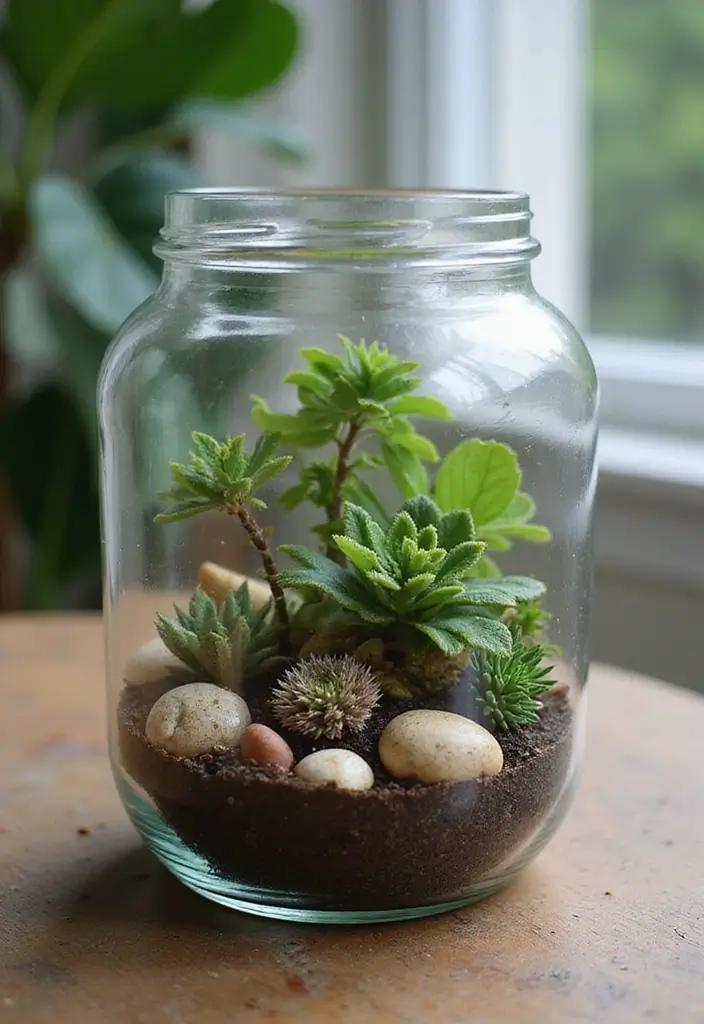
Terrarium gardens are a unique way to bring the outdoors inside! These mini-gardens are contained in glass jars or containers, creating beautiful ecosystems that are easy to care for.
How to create one:
– Choose your container: Glass jars, bowls, or even lightbulbs can work.
– Layering: Start with rocks for drainage, followed by charcoal, soil, and plants.
– Maintenance: Keep your terrarium in indirect light and water sparingly.
Terrariums are not only visually appealing but also serve as an excellent project for plant lovers, allowing you to create a miniature world right on your desk or coffee table!
29. Garden Art Installations
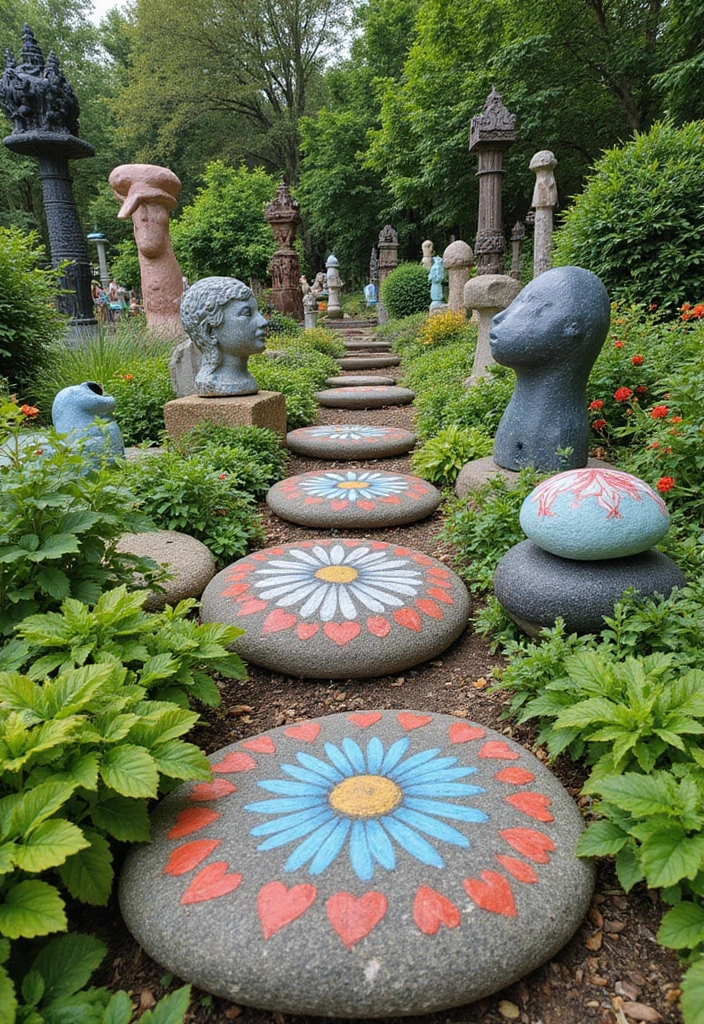
Turn your garden into an art gallery with unique garden art installations! From sculptures to painted stones, artistic features can enhance the aesthetic of your outdoor space and showcase your personality.
Ideas for garden art:
– Sculptures: Choose pieces that resonate with you or match your garden theme.
– Painted stones: Create fun rock art to add color and whimsy.
– Mosaic pathways: Incorporate artistic designs into your walking paths.
The right art can elevate your garden’s design and create fascinating focal points, encouraging exploration and appreciation of nature and creativity!
30. Eco-Friendly Gardening
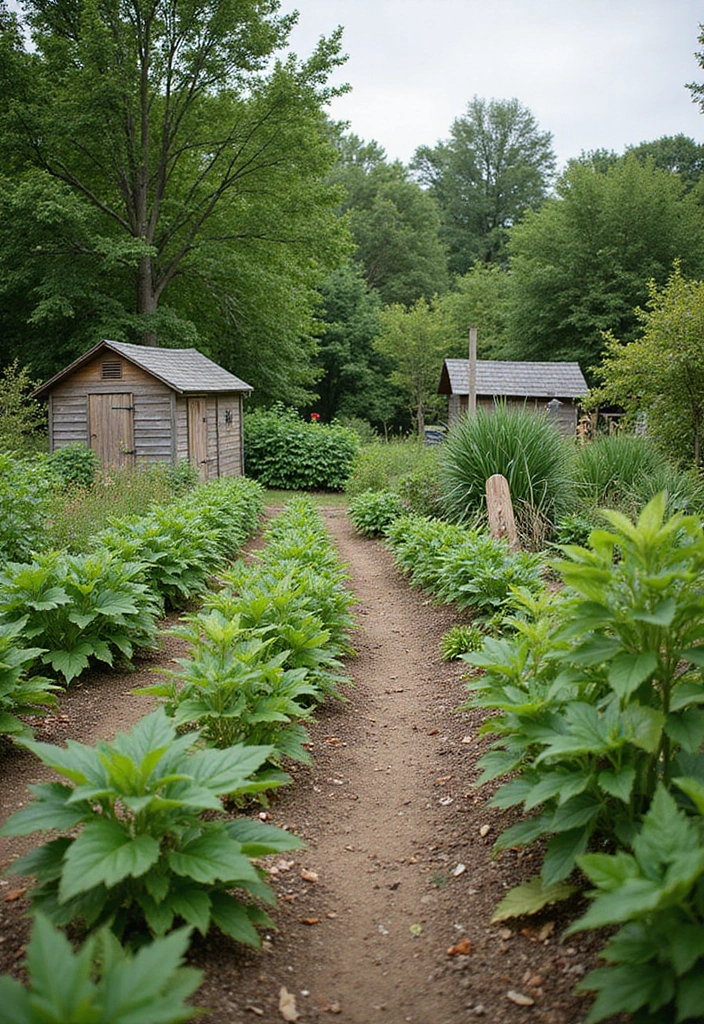
Adopt eco-friendly gardening practices to promote sustainability while enjoying your outdoor space. Focus on organic methods, composting, and native plants to create a garden that is both beautiful and environmentally conscious.
How to get started:
– Composting: Create a compost bin to recycle kitchen scraps and yard waste.
– Native plants: Use local flora that requires less water and support wildlife.
– Organic methods: Avoid synthetic fertilizers and pesticides for healthier soil and plants.
An eco-friendly garden not only contributes positively to the environment but also creates a vibrant space that nurtures life and beauty sustainably!
Create a garden that gives back! By embracing eco-friendly practices, you not only enhance your outdoor space but also nurture the planet. Sustainable choices like composting and native plants lead to a beautiful, thriving garden.
Conclusion
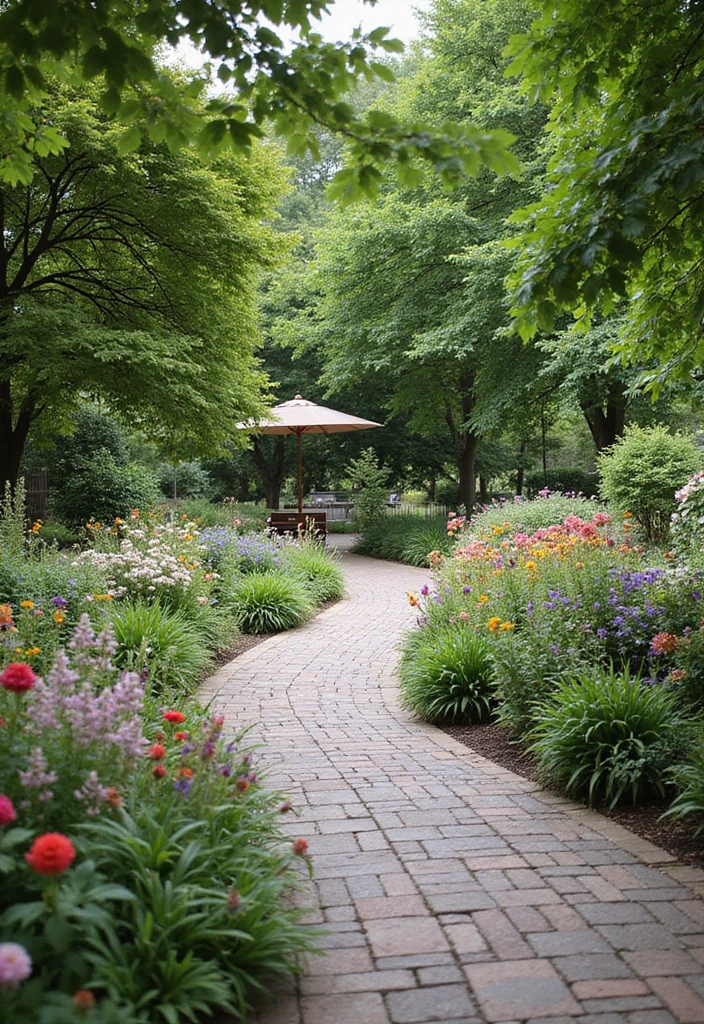
Each of these garden design ideas brings its own unique charm and personality to your outdoor space. Whether you choose to create a vertical garden, a seasonal display, or an eco-friendly oasis, the possibilities are endless.
Explore these stunning ideas and consider how they can enhance your backyard or garden. As you embark on your gardening journey, remember to make it fun, sustainable, and uniquely yours!
Frequently Asked Questions
What are some easy vertical garden design ideas for small spaces?
If you’re looking to maximize your gardening potential in a small space, vertical gardens are a perfect solution! Consider starting with a vertical succulent wall or a hanging herb garden. These designs not only save space but also add a touch of greenery to your patio or balcony. You can use repurposed materials like wooden pallets or containers to create stunning displays that reflect your personal style!
How can I create a sustainable garden design?
Creating a sustainable garden is all about working with nature. Begin by choosing native plants that thrive in your area, reducing the need for excessive watering and fertilizers. Incorporate composting to enrich your soil naturally, and consider an edible landscape that combines beauty with functionality. These practices not only support local biodiversity but also create a vibrant and sustainable outdoor space.
What are some creative gardening techniques to enhance my garden’s aesthetics?
Get ready to unleash your creativity! Try incorporating rock gardens for a drought-resistant aesthetic, or opt for modular vertical gardens that allow for artistic arrangements. Additionally, consider adding garden art installations to showcase your personality and style. These unique touches can transform your garden from ordinary to extraordinary!
How do I choose the right plants for a colorful container garden?
Choosing the right plants for your colorful container garden is all about variety and balance! Opt for a mix of annuals and perennials that bloom in different seasons. Incorporate plants with varying heights, colors, and textures to create visual interest. Don’t forget to consider the sunlight requirements and water needs of each plant to ensure a thriving, vibrant display!
What tips can I follow for a successful backyard makeover?
Embarking on a backyard makeover is an exciting journey! Start by planning your space with landscape design tips that suit your lifestyle—think about areas for relaxation, play, or entertaining. Incorporate features like pathways and outdoor living spaces to enhance functionality. Finally, remember to add a touch of greenery with flower bed inspiration that brings color and life to your backyard!
